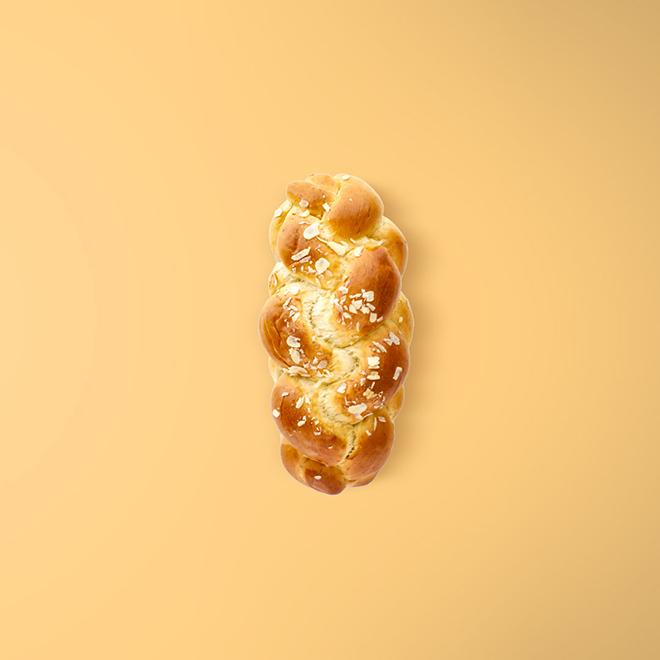Brioche




Brioche is a delightful type of bread originating from France, known for its rich flavor, soft and airy crumb, and golden brown crust. Unlike plain bread, brioche is considered an "enriched dough" due to the additional fat and sugar. This results in a smoother, silkier texture.
Brioche is known for its airy and open crumb, achieved through a specific folding technique called "laminage." This creates layers of butter and dough, trapping air bubbles for a light and fluffy texture.
Because of its high butter content made brioche a luxury good in the 18th and 19th centuries. It was even subject to a "patisserie tax" in France, making it a privilege enjoyed primarily by the wealthy.
Like most bread, if planning to use it within a day or two, you can keep brioche on a kitchen counter, otherwise, it’s best to store it in a plastic bag in the fridge. Avoid storing brioche close to strong-smelling foods like onions and garlic because it can quickly absorb the smells and flavors of other food.
Brioche doesn’t stay soft for long, so consider that when buying it - sliced brioche will dry up faster than a whole loaf. If it starts getting stale, just slice it up and toast in an oven for a few minutes.
Brioche is a great leftover bread. You can cube it and use it for French toast, bread pudding, or even stuffing.
It can even be transformed into cinnamon rolls by mixing some sugar, butter and cinnamon. Or donuts! Cut up the bread into donut-shaped pieces, fry them until golden then glaze or dust them with your favorite flavors.
During the French Revolution, brioche became a symbol of the aristocracy's excess. Some rebels even used it as a weapon, hurling loaves at representatives of the ruling class.
Brioche's signature airy texture comes from a technique called "laminage," where butter is repeatedly folded into the dough. This creates layers of air that expand during baking, resulting in that light and fluffy crumb.
When making homemade brioche, try to avoid stand mixers. Brioche needs gentle hand kneading to create that soft, airy texture. After baking, don’t slice it immediately, let it sit for a bit to allow the texture to set and flavor to develop.
Brioche needs a lot of butter, so it’s important to understand that cold butter creates distinct flakes in the dough, while melted butter contributes to a richer, smoother crumb. Choose your technique based on the desired texture.
While brioche is known for its delicious, buttery flavor and soft, airy texture, its health benefits aren't as straightforward. It's important to consider both its upsides and downsides when evaluating its role in a healthy diet.
Brioche contains protein, B vitamins, and some minerals like iron and calcium. The carbohydrates in brioche provide energy, suitable for athletes or individuals needing a quick energy boost.
Brioche is significantly higher in saturated fat compared to many other breads. Brioche is calorie-dense due to its butter and egg content. Most brioche is made with refined flour, which lacks the fiber and nutrients found in whole grains. Enjoy brioche in a mindful way and focus on incorporating nutrient-rich whole foods for optimal health and well-being.
Corrections or improvements? Email us at
content@sidechef.com